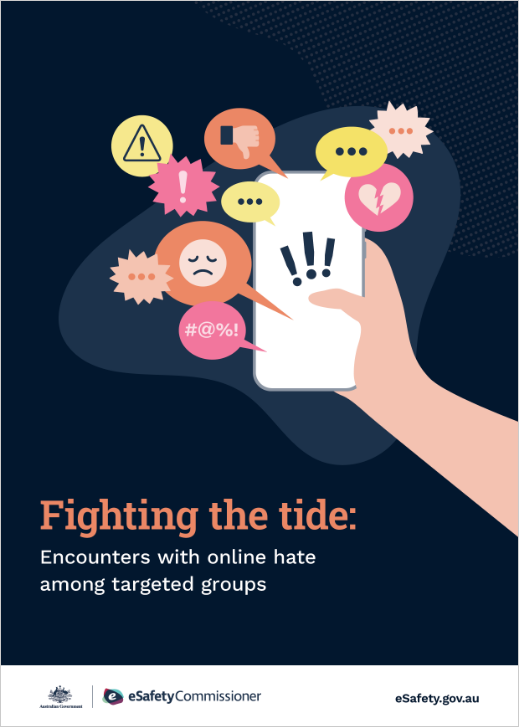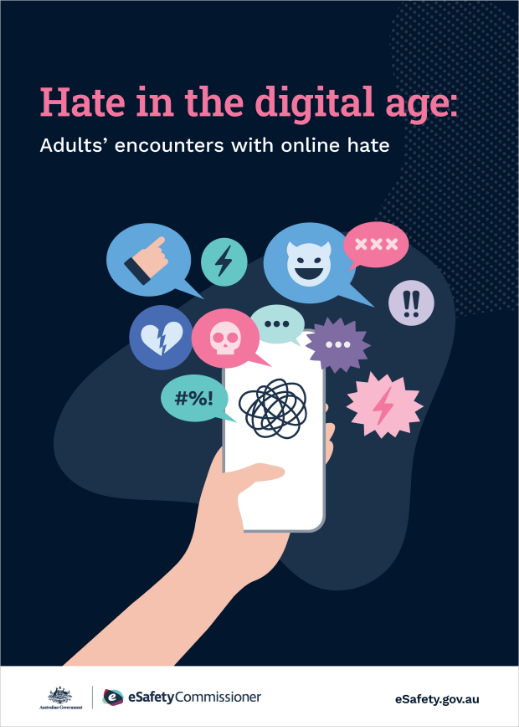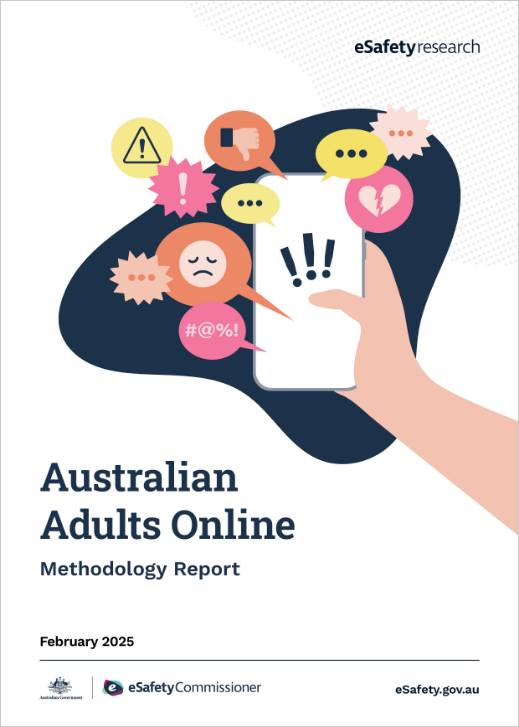Encounters with online hate

Online hate is one of the most prevalent forms of digital violence. It affects many internet users in Australia and globally, especially individuals from targeted groups. It can take the form of hateful posts or comments about a person based on discrimination or bias related to characteristics such as their sexual orientation, gender, race, disability, religion or ethnicity.
eSafety's online hate research series explores the prevalence, nature and impact of encounters with online hate among adults in Australia, including those from targeted groups. It draws on data from eSafety’s ‘Australian adults online’ survey which was conducted in November 2022.
Report 1: Fighting the tide – Encounters with online hate among targeted groups
‘Fighting the tide’ explores encounters with online hate among adults from targeted groups, including sexually diverse individuals, Aboriginal and/or Torres Strait Islanders, individuals with disability, and those from other culturally and racially marginalised backgrounds.
Summary of key findings
- Adults who identify as sexually diverse, Aboriginal and/or Torres Strait Islander, with disability, and/or linguistically diverse are more likely to be targeted with online hate.
- Adults from these targeted groups are more likely to experience online hate based on discrimination or bias related to at least one aspect of their identity.
- Most targeted adults experience online hate on social media, with the hate most often perpetrated by a stranger.
- Online hate has harmful effects on the wellbeing of adults from targeted groups.
- A minority of targeted adults act after encountering online hate, but many refrain from acting because they don’t think anything will change.
Report 2: Hate in the digital age – Adults’ encounters with online hate
‘Hate in the digital age’ explores the extent and impact of online hate among the broader adult community in Australia.
Summary of key findings
- Encounters with online hate are relatively common, with 1 in 3 (34%) adults surveyed indicating that they had seen online hate in the previous year, while almost 1 in 5 (18%) had personally experienced it.
- Women are more likely than men to experience gendered online hate (23% vs. 17%), while men are more likely than women to experience online hate based on their age (23% vs. 17%), race (23% vs. 14%), nationality (21% vs. 13%) or sexual orientation (12% vs. 7%).
- Younger adults are more likely than older adults to encounter online hate. Almost 1 in 2 (49%) adults aged 18 to 34 had seen online hate, and 1 in 4 (26%) had personally experienced it in the past 12 months, compared with 20% of adults aged 50+ who had seen online hate and 10% who had personally experienced it.
- Most online hate experiences are perpetrated by strangers (62%) and on social media (63%).
- Online hate can negatively impact wellbeing, with more than 1 in 2 (54%) adults surveyed who had personally experienced online hate reporting at least one significant negative impact of their experience.
- Despite the perceived impacts of online hate, only a minority of adults surveyed who had seen or experienced online hate took any action in response to their encounter (25% and 39%, respectively).


